In our summer survey, we asked Band Directors Talk Shop readers “How do you encourage and facilitate chamber music in your band?” With over 300 responses to the survey, we put together these 47 ideas to help you improve small ensembles in your program.
Thanks so much to all of our readers who took time to fill out the survey. We’ll be posting more Readers’ Collaborative Articles in the future!
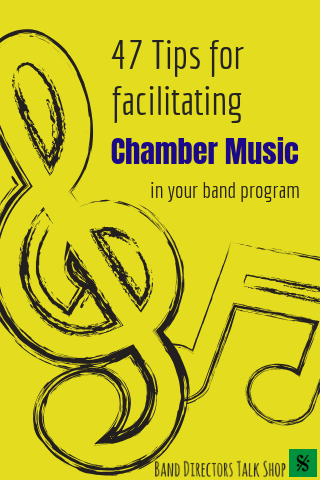
Provide Rehearsal Time
- Give chamber groups guided practice time.
- Have sectionals outside of band.
- Open the band room at lunch.
- Assign kids to groups and provide minimal coaching. Once they feel successful and perform well they will catch on and value the medium.
- Teach a chamber music unit and get the whole band involved. Everyone is in an ensemble and everyone works on it during class.
- If able, set aside a time of year when the entire ensemble can break into chamber ensembles. This gives the kids a chance to take ownership of their music as well as provides appropriate challenges for students depending on their abilities.
- I give them time in class and opportunities to perform. They LOVE it. I’ve had more students in more ensembles every year. Assign specific students to organize a performance in front of their peers.
- I must let them practice in a small room during class. None of them can ever stay after school.
- Teach one piece to everyone in parts, and then let kids assign themselves various parts. They get the ‘orchestration’ aspect.
Provide Performance Opportunities
- Use holidays and parent events as performance opportunities
- A recital night is great for this. It allows kids to perform (and families to watch) in an intimate setting – say, the school library.
- I encourage solo and ensemble participation and do a “solo and ensemble only” concert.
- Participation in solo and ensemble festivals is required.
- Any groups that are ready are able to put together ensembles for festival evaluations, and/or perform them at concerts or during visual arts festivals.
- On Fridays I encourage them to have a recital and play a duet from their book for the class.
- Performance Fridays/Chamber Tuesdays etc. (more HERE)
- Performance opportunities in our annual “coffee house concerts” playing repertoire they choose.
- Our first concert of the year is a chamber music concert. So for the first 6-8 weeks, they work on chamber music.
- I find lots of community events for the students to play at.
- We hold a chamber concert each year in April. (others said March, February, Fall etc.)
- Offer as many opportunities as you can for traditional and non-traditional ensembles and make sure they have lots of opportunities to perform.
- We have a chamber concert near the end of the year and performances in the hallway.
- Give them time to perform– I try to use these groups as transitions between large ensembles at concerts.
Provide Interesting Repertoire
- Give them the music and they will create little trios and quartets. If you do not give them the music it will not spontaneously happen.
- Provide lots of good quality material for students to choose from such as the books that allow any instrument to join with any other(s).
- Good and interesting repertoire!
- Have kids find music they want to play with friends and write it out and upload to SmartMusic for them the work on.
- Just commit to it. Order a bunch of music (especially mix and match) and give the kids options to make groups. Then refine it over time (more specific group types, music approval, etc.)
- Take advantage of holiday and pop music, get them playing with friends for fun, then introduce “familiar” classical chamber pieces
Develop Leadership
- Empower student leaders/section leaders to help with organizing groups and scheduling practice times
- They get to be their own directors. I’m not there telling them how to play and when to play. Very autonomous situation.
- Creating a culture of non-perfection. Younger instrumentalists are often afraid of more exposed parts/ensembles. If students are afraid of making a mistake, they won’t play out in any group.
- Once the younger students see them perform, they want to have that “special performance” opportunity and are willing to put in the time and effort to create that performance.
- Get them playing duets and trios in beginning band or middle school band. It will become a normal thing that they just expect to do by the time they get to high school.
Motivation
- I keep small ensemble books on a bookshelf in my room. When a student has received three perfect scores in a row (5 out of 5 points) on their playing tests on our repertoire and scales, they are able to pick a friend and go work on chamber music for the rest of the class.
- Always recognize individual accomplishments
- Additional incentives for students to participate in performances
- Encourage through solo and ensemble, spots on our concerts, spots on student leadership, and, if they’re good enough, spots in our halftime show
Specific Examples
- I assign duet partners and let students form larger ensembles, but only with 2 parts to start. I always give duets with both parts on the same page so the students can see how the opposing part fits with their own.
- Require Region Solo and Ensemble: I started a program two years ago called “Project: Falcon Blue” which was a 3.5 months process of preparing for solo and ensemble. In early January, students receive the contract/timeline of the events for Project: Falcon Blue (the goal is for everyone to get the blue (superior) ribbon at solo and ensemble which is also our school colors). January they pick their piece (and group). February they perform in class (for a grade and critique). March they perform again in class (for a grade and improve upon last time) and then mid-April is Solo and Ensemble. I get resistance from some students but it gets kids practicing (because of all the grades). We have yet to reach our goal, but we are getting much closer!! If you fail, you get up and keep trying!
- Twice a year my students are divided into small ensemble groups. Each group is responsible for making a video of their performance and presenting it to the class. For the first ensemble, I put them in specific groups and give the music. For the second ensemble experience, they can choose who they would like to be in a group with, and I either supply music or they can arrange their own music.
- I run Chamber Ensembles as a credited course. My students meet at the beginning of the year to form various groups and then we come up with a rehearsal schedule. All of my ensembles are required to meet once per week – percussion meets twice because of the amount of time it takes during rehearsal to move equipment, etc. Ensembles rehearse during our daily FLEX block or at lunch. I try to work with each ensemble for at least part of their rehearsal, although I’d like them to become more self-directed. I think the reason why I work with them is because it’s considered a credit course and I have to justify being given time to ‘teach’ it.
- My eighth grade students spend the entire month of January in small (3-5) like-instrument (woodwinds, brass, or percussion) groups. They give me 4 preferences on 3×5 cards and I promise they will get at least one of their choices. I place kids in groups of similar ability levels, then they pick chamber music to work on. All groups perform at a concert at the end of January. For most of my kids, this is their favorite activity of the year.
- Students in the high school Honors Band (a weighted grade option for students in Concert Band) are encouraged to participate in chamber ensembles for holiday events in the area and throughout the year. We’ll also be offering a Chamber Music class for students in band, choir, and orchestra that I will be co-teaching with the choir director.
- I open my band room an hour before school starts to let kids come practice. I have many different books for them to use and keep a library so they can check out materials. We then host a chamber music night where they can play anything they wish for the audience, something from my books, they found on line, they wrote themselves. Then we have punch and cookies.
- I require all my students (except beginners) to choose a solo or ensemble piece to be performed at our spring arts festival. Leading up to it they must record themselves 2 months before concert time and then again three weeks later. Then they have to perform for the class. Then they are usually ready for the arts festival.
Final Words
- Do it! Don’t be afraid.
Related Reading:
The 100 Gig Challenge! (100 chamber performances a year!)
ONE Thing that Improved Student Performance in Your Band (well, really 64)
Best Advice for Teaching Phrasing and Style – from 50+ Band Directors
If you would like to receive our weekly newsletter, sign up here.
Don’t forget to like us on Facebook too!
Learn. Share. Inspire.
BandDirectorsTalkShop.com
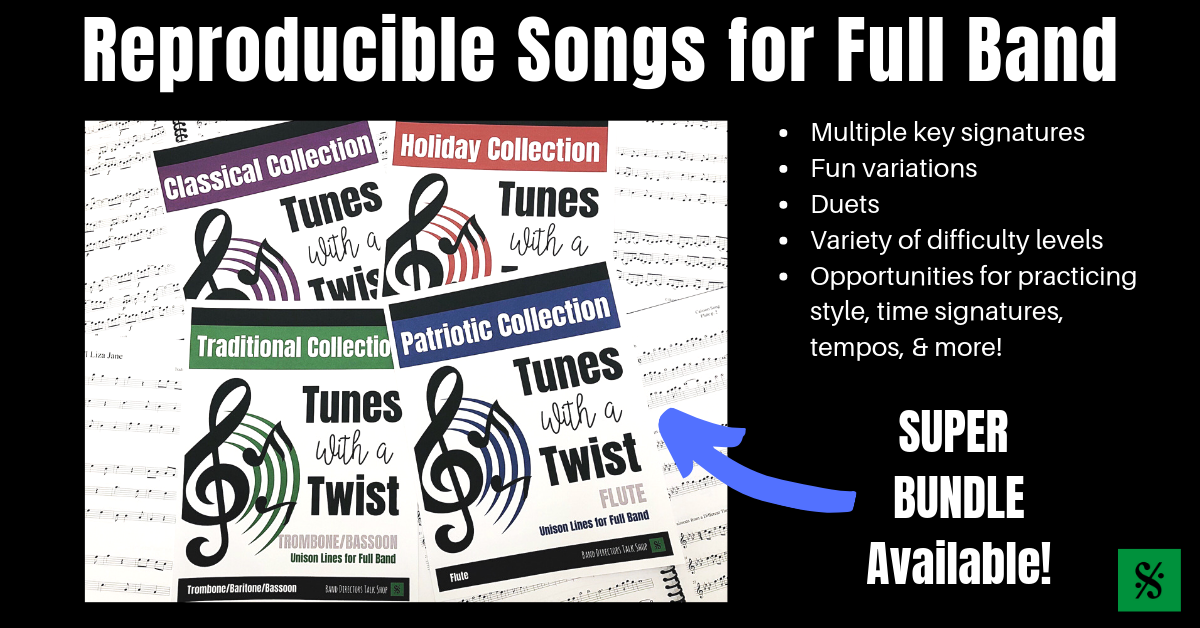
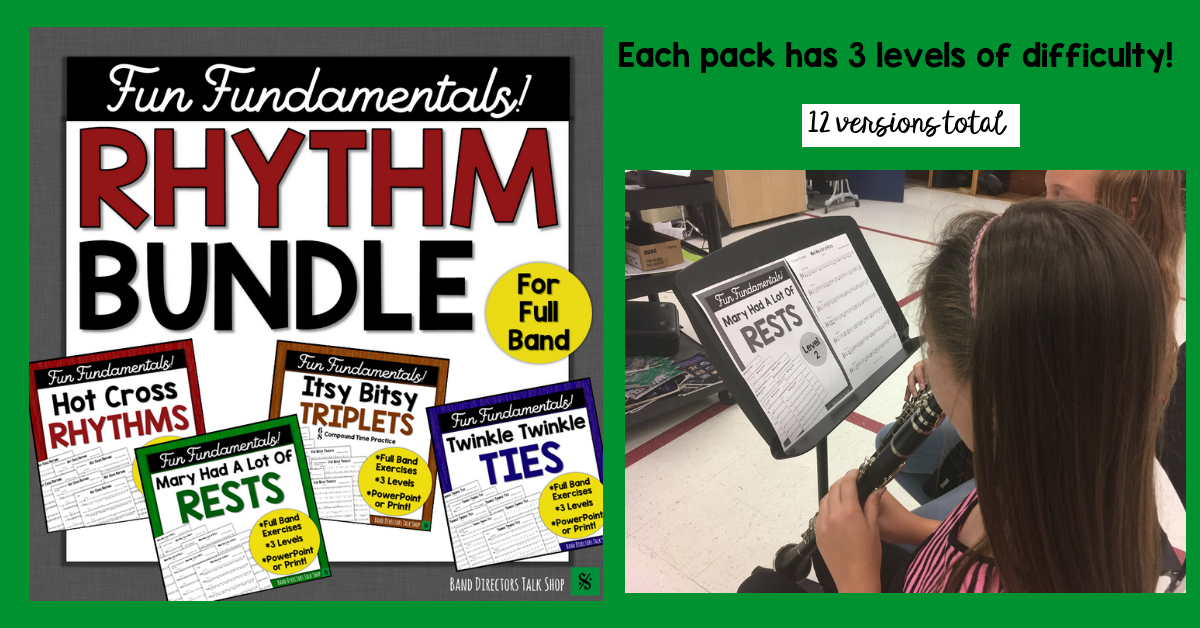


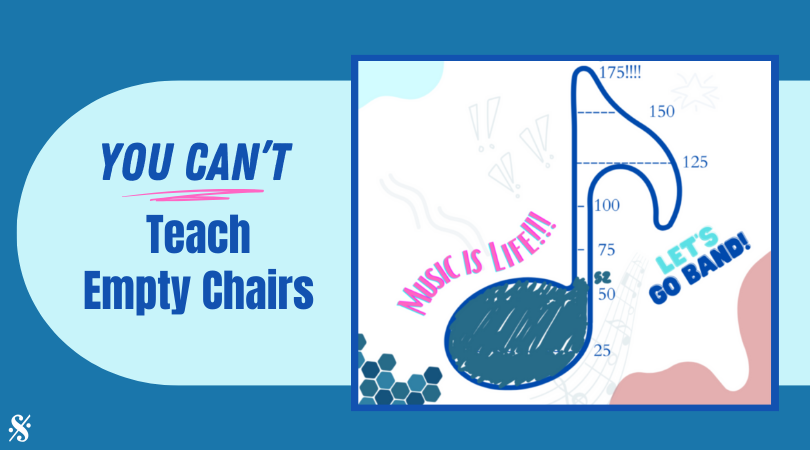
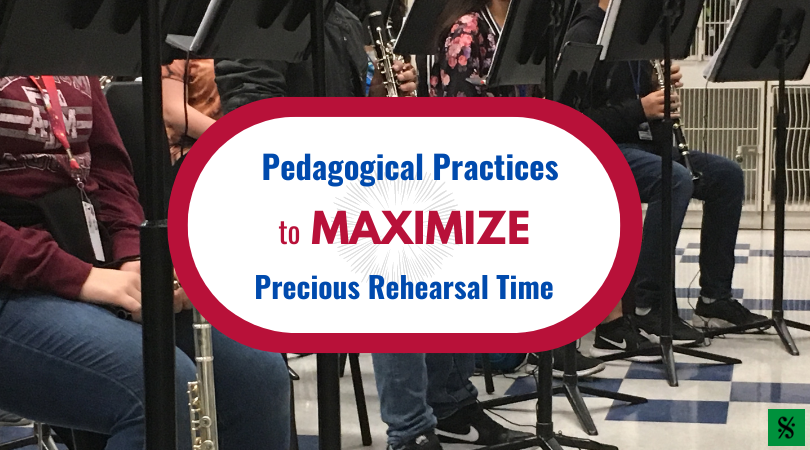

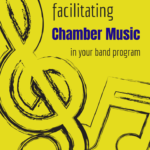
Leave a Reply
You must be logged in to post a comment.